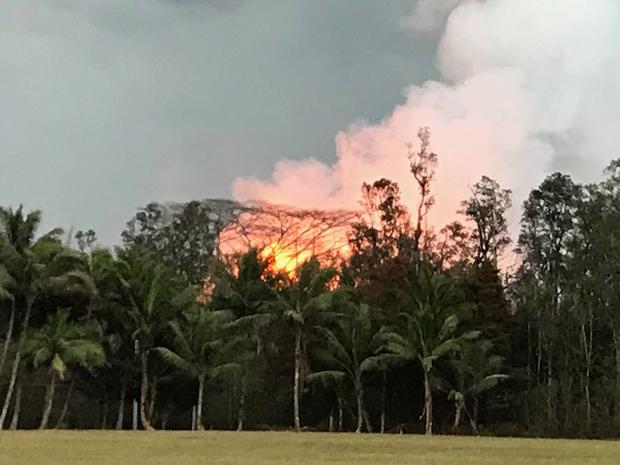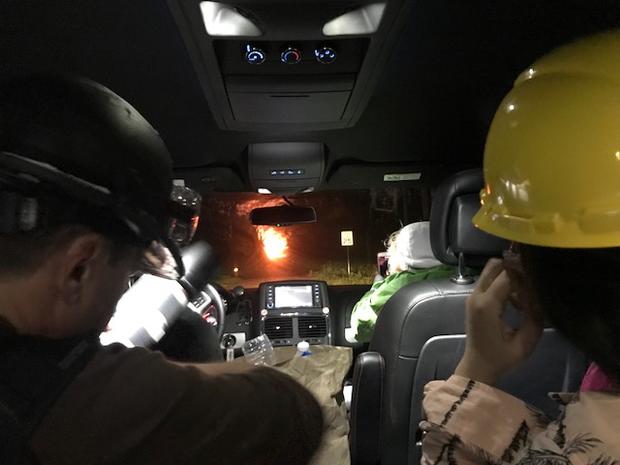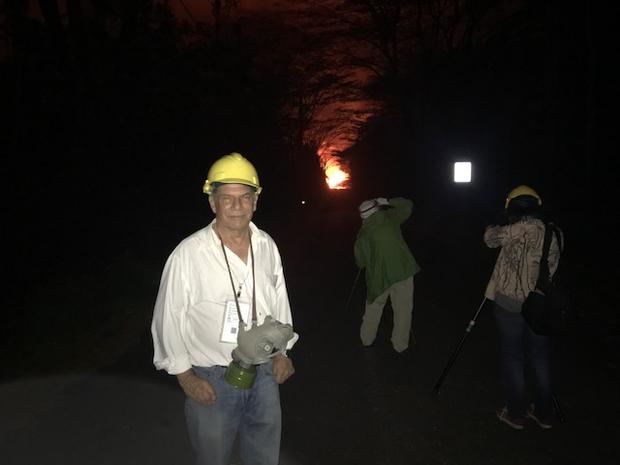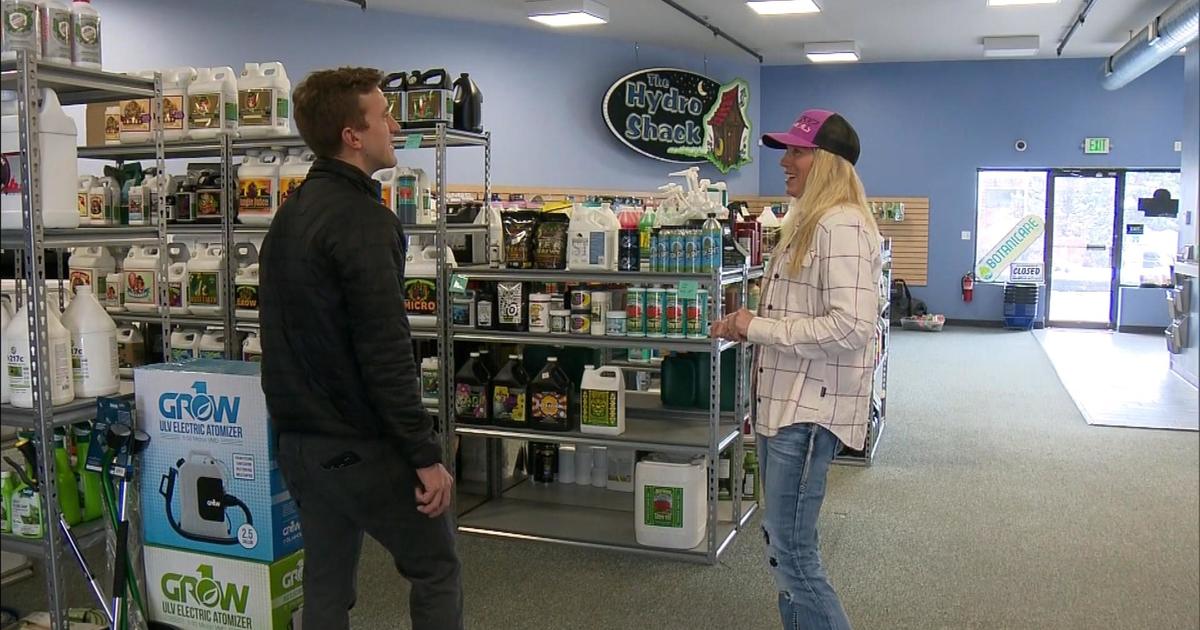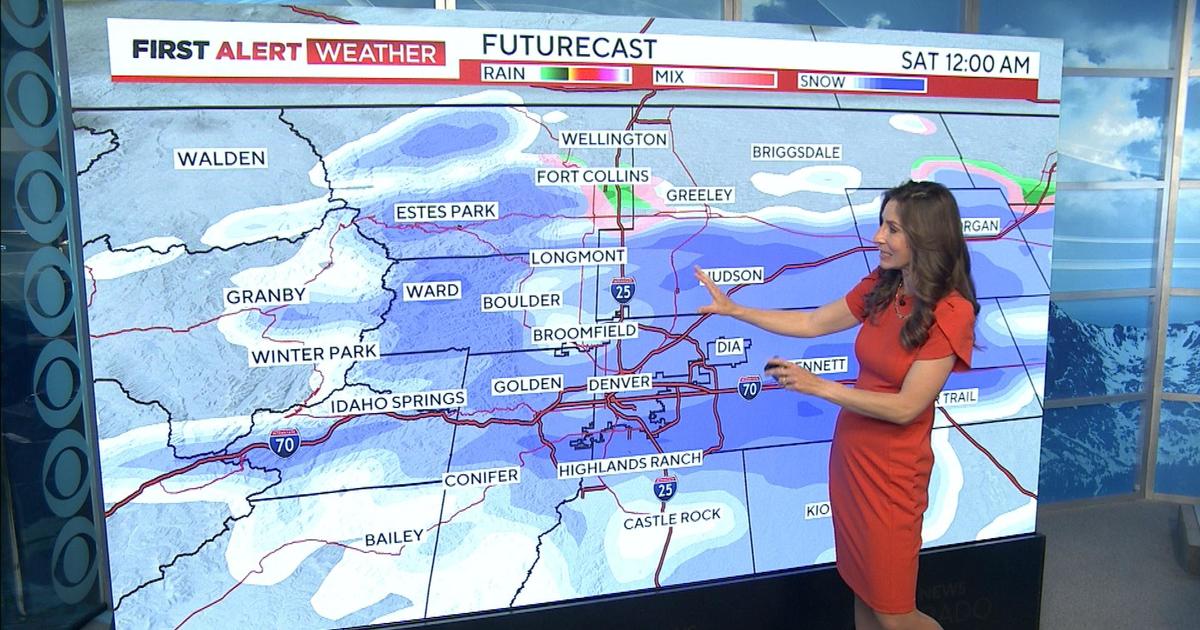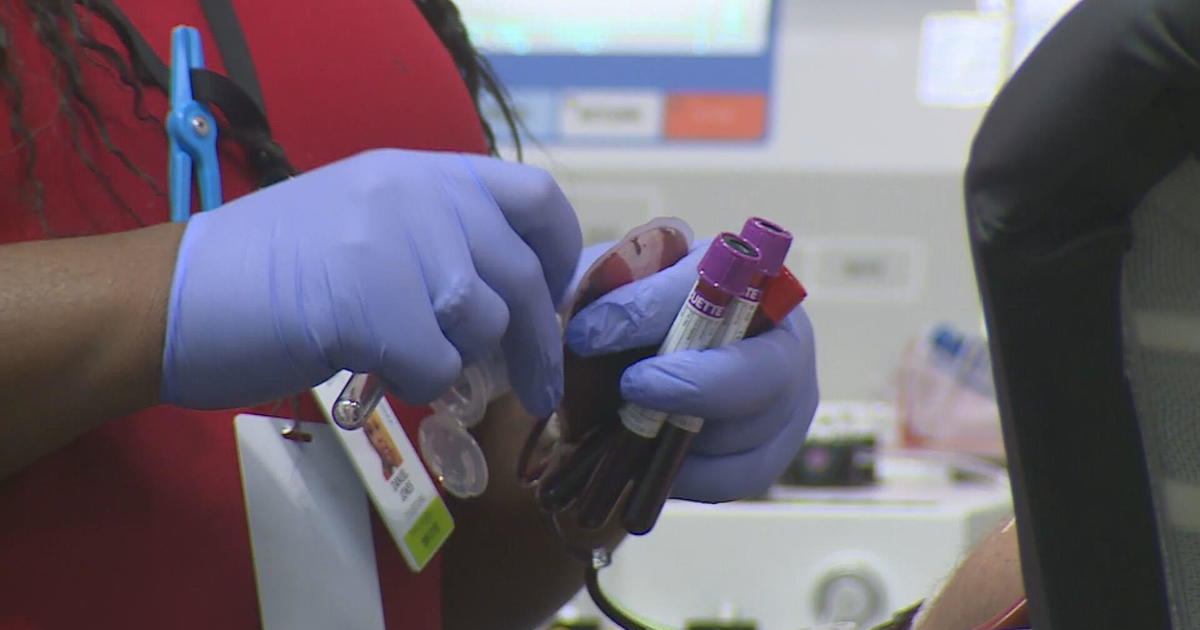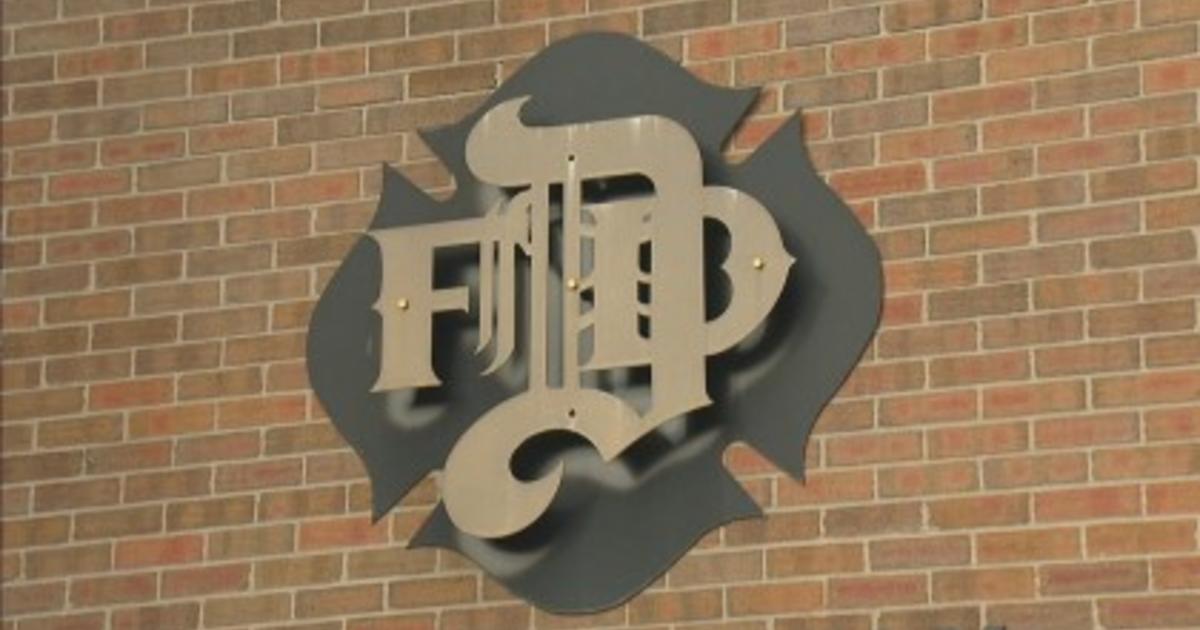Hawaii's Kilauea: CBS4's Sallinger Gets An Up Close Look At Volcano
(CBS4) - The vivid sight of Kilauea's bright colored lava shooting into the air grabbed my attention. I had covered tornadoes, hurricanes, floods, earthquakes, but never a volcano. If it wasn't on my bucket list before, it was now. The question became how to make it happen. Like a jigsaw puzzle I was able to piece together frequent flier miles with a week of vacation to turn my reporting fantasy into a reality.
Here is a brief rundown of the adventure:
Friday, June 8
I flew from Denver seven hours nonstop arriving in Kona on the west side of Big Island. The area is away from the volcano's lava flow, but not its effects. The sky was filled with vog (a new word for my vocabulary-volcanic smog or fog). The visibility was much like a bad day in LA. From Kona I drove my rental car up and across the center of the island through thick fog (not vog) before descending into Hilo.
Hilo
I had gotten in touch with the Hawaii National Guard media liaison through the U.S. Geological Survey public information officers to let them know I would be coming in from Denver. The timing was good. I received a text asking if I wanted to go on a media tour into the evacuation zone that evening. I was definitely dragging after the long flight and drive, but instinctively replied yes. The meeting point was in Pahoa, in the southeastern portion of the island. The first question the guard media liaison officer asked was if I had a gas mask and hard hat. I did not. Nevertheless, I met up with them and recorded some interviews for CBS News Radio which before leaving Denver had indicated it would be interested in airing my stories.
Drove to my Airbnb
I had picked a place 10 miles north of Hilo hoping to avoid the possibility of sharing my bed with flowing lava. I quickly found out I had made a bad choice. The place wasn't very nice; no air, plenty of bugs and a bad location, but I had prepaid 4 nights so I was stuck.
Saturday, June 9
The Airbnb not only did not have air (conditioning), but didn't offer the other "b" (breakfast) so, I drove into Hilo and had a bite to eat. My next question became, "where do I find a gas mask?" While Hilo did not fit my image of what Hawaii's second largest city would look like, fortunately it did have an army surplus store. I bought a Czech made gas mask and a hard hat which would become my tickets to be able to go on that evening's Hawaii National Guard media tour.
Media tour
Driving southeast from Hilo I got my first glimpse of what I had come from so far to see. Kilauea was billowing thick gray smoke highlighted with an orange tint into the sky. It was about a half hour drive to the southeast from Hilo to a church in Pahoa, which was as close as the general public was allowed to get to the volcano. In the parking lot I met up with my National Guard escorts and other members of the news media from the US, Japan, and Mexico.
We piled into minivans to go to our first stop, a fire station. There we obtained credentials and were given a safety briefing clearly designed to scare us into following the rules and staying with our escorts. My favorite line of the briefing warned if you got too close to lava from a fissure vent, "YOU WILL DIE!"
No one seemed too frightened to back out of the tour so off we went. We were waived through two checkpoints into what had become known as an important location in this event, Leilani Estates. This area had already lost a portion of the 600 homes that had been destroyed as of that date. Other parts of the Leilani Estates were under evacuation. We stopped along what had been main road, but was now rendered impassable because it was covered in dried black lava.
Following the lava trail to the right led directly to the bright orange flames spilling out of the earth. It was a spectacular sight, but had an awfully drab name, "fissure 8." Rather than splashing out of the crater at the top of the volcano, the lava jumps from the cracks or fissures on the side that have been created from all the pressure. We were about a mile away at this point.
Next stop, a park in Leilani Estates. Here my boots created a loud crunching sound as I walked over cinders from the volcano towards a good viewing point. From this location the flames and billowing smoke were right in front of us, (the lava had chosen another route). This was about a half mile from the active fissure. We were told by our escorts that the lava was "fountaining" about 150-200 feet into the air.
Unplanned stop
A few blocks away, we turned a corner and In front of us at the end of the road was what looked like a massive bonfire. It was fountaining from the same fissure. To suddenly see that in front of us was dramatic. Did we turn around? No, we said, "let's get closer." Our escorts got out of the van and checked their meters for poisonous gases and assured us it was safe to breathe. One of the reporters wore a gas mask, but I chose to wait and see if the military people put their masks on which they didn't.
By now it was nighttime. There was darkness, accompanied by what I believe was a loud chorus of coquis (frogs). In front of us the lava was shooting into the air. The photographers in our group were delighted.
At our final stop nearby we could see a river of lava flowing at about 3-4 miles per hour from the volcano to the sea. It flows in a channel with hardened lava on both sides. The fear though was that it might overflow the levees it had created.
We then went back to the fire station, returned our credentials and went back to the church. All journalists and escorts were accounted for.
Fascinating stories
During the next days I was able to interview people who had already lost their homes or were in danger of losing them. Some were residing in shelters. I talked with a family of 6 living in their minivan. Everywhere I turned there was another fascinating story waiting to be told.
During my time in Hilo I was able to get together for coffee with former channel 4 "PM Magazine" photographer Mick Kalber (Former Chicago TV anchorman Floyd Kalber's son). Mick, who worked in Denver in the late 70s and early 80s, lives in Leilani Estates, has been evacuated, and every day documents the volcano from a helicopter. His amazing video has appeared all over the world.
My regrets on this "do it yourself" adventure were not going up in a helicopter to see the volcano from the air and not taking a boat tour to see the "laze" (volcanic haze) as the molten lava pours into the cold sea. A friend's wife did it and warned that everyone on board the boat had gotten sick.
I tried to remain cognizant that while hundreds of families had lost homes it has been far less traumatic than another volcano eruption happening in Guatemala where so many had just lost their lives.
To sum it up, it was a once-in-a-lifetime-experience that I would love to do again.
CBS4's Rick Sallinger is a Peabody award winning reporter who has been with the station more than two decades doing hard news and investigative reporting. Follow him on Twitter @ricksallinger.



